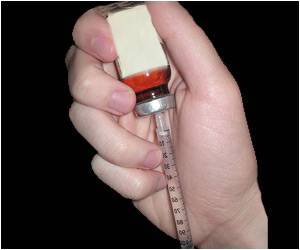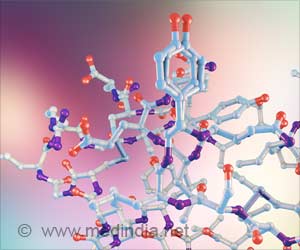Synthetic oxytocin combined with opioids as a safer alternative for pain management, aiming to reduce both pain and the risk of addiction in older adults.

An interdisciplinary research team will carry out the two-year study with $414,375 in funding from the National Institutes of Health, and it is expected to be completed by April 2025 (1✔ ✔Trusted Source
“Cuddle hormone†oxytocin may provide pain relief and help curb harmful opioid use
Go to source).
‘With 60 million opioid users and 39.5 million drug use disorders worldwide, finding non-addictive pain management solutions is crucial. #oxytocin #painkiller #painrelief #medindia’





Advertisement
Cuddle Hormone and Opioids as a New Pain Management Approach
According to Meredith Berry, Ph.D., an assistant professor in the Department of Health Education & Behavior at the UF College of Health & Human Performance, "physicians could potentially prescribe, in combination, an opioid and oxytocin as an acute pain management option, while at the same time lessening the likelihood of developing an opioid addiction."Berry is one of the study’s lead researchers, along with Yenisel Cruz-Almeida, Ph.D., an associate professor in the UF College of Dentistry’s Department of Community Dentistry and Behavioral Science and the associate director of the Pain Research & Intervention Center of Excellence; and Natalie Ebner, Ph.D., a professor in the UF College of Liberal Arts and Sciences’ Department of Psychology and associate director of the Center for Cognitive Aging and Memory Clinical Translational Research at the McKnight Brain Institute.
The team is analyzing whether oxytocin — which produces positive feelings in the body and is the hormone most known for its role in stimulating child labor, supporting parent-child bonding, and other social-affiliative processes — can be used as a potential pain reducer while simultaneously decreasing the desire for long-term opioid use. While opioids can be highly effective for short-term pain relief, Berry said, pharmaceutical alternatives for acute pain could lead to less addicting habits.
Advertisement
Clinical Study Testing Cuddle Hormone for Safer Pain Relief
In a double-blind, randomized, placebo-controlled study, 30 participants between the ages of 55 and 85 with a history of some opioid use will take synthetic oxytocin via a nasal spray, or take a placebo shortly after administering oral oxycodone.Subjects will then rate how much they like the drugs and their cardiovascular, respiratory, cognitive, and affective responses to the drugs will be tracked. Additionally, pain measures will be collected by inducing acute mechanical pain, including subtle force applied to participants’ thighs, and thermal pain, such as cold and heat applied to participants’ hands.
Advertisement
Reducing Opioid Addiction in Older Adults with Synthetic Cuddle Hormone
Ebner will analyze the changes in mood and the cognitive outcomes, Cruz-Almeida will examine the effects of the drugs versus placebo on pain response, and Berry will evaluate the potential of reduced opioid addiction to understand the effects of the drug combinations. Physicians from the UF College of Medicine are also involved in the study to oversee participant safety.“Collaborating with a multidisciplinary team — each member bringing expertise from various fields yet united by a deep understanding of pain and addiction — allows us to evaluate the data and implications through a diverse and comprehensive lens,” Berry said.
Developing innovative, non-addictive options for pain management continues to be critical work in the current health landscape. In 2021, approximately 60 million people used opioids, and 39.5 million people developed a drug use disorder, according to the World Health Organization.
In 2017, the U.S. Department of Health and Human Services declared the opioid crisis a national public health emergency. And, as recently as June, the department issued a renewal of determination, affirming that the opioid crisis remains a public health emergency.
Midlife and older adults, who are frequently prescribed opioids for pain, are developing opioid addictions at an increased rate. Incorporating synthetic oxytocin into these patients’ pain management routines could be a game changer.
Reference:
- “Cuddle hormone” oxytocin may provide pain relief and help curb harmful opioid use - (https:hhp.ufl.edu/articles/2024/berry-oxytocin-as-opioid-alternative.html)
Source-Eurekalert















